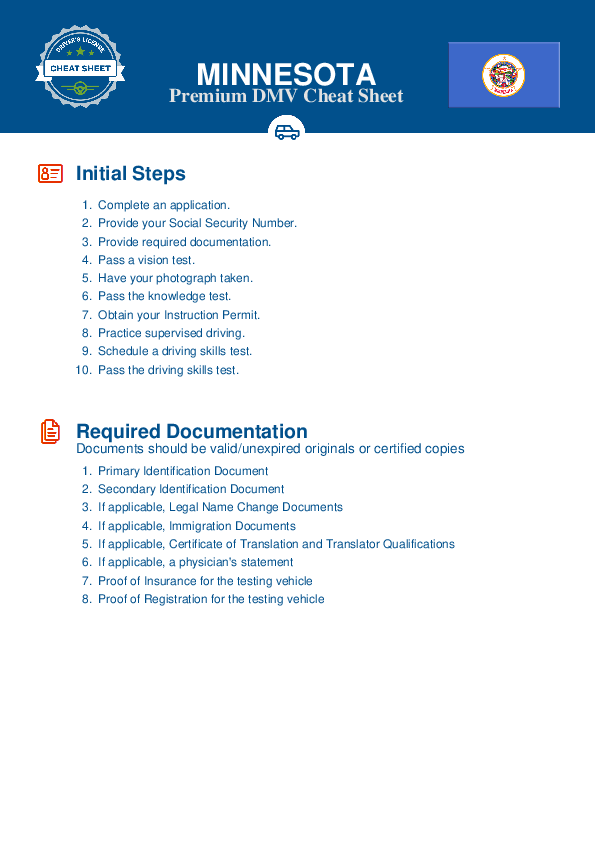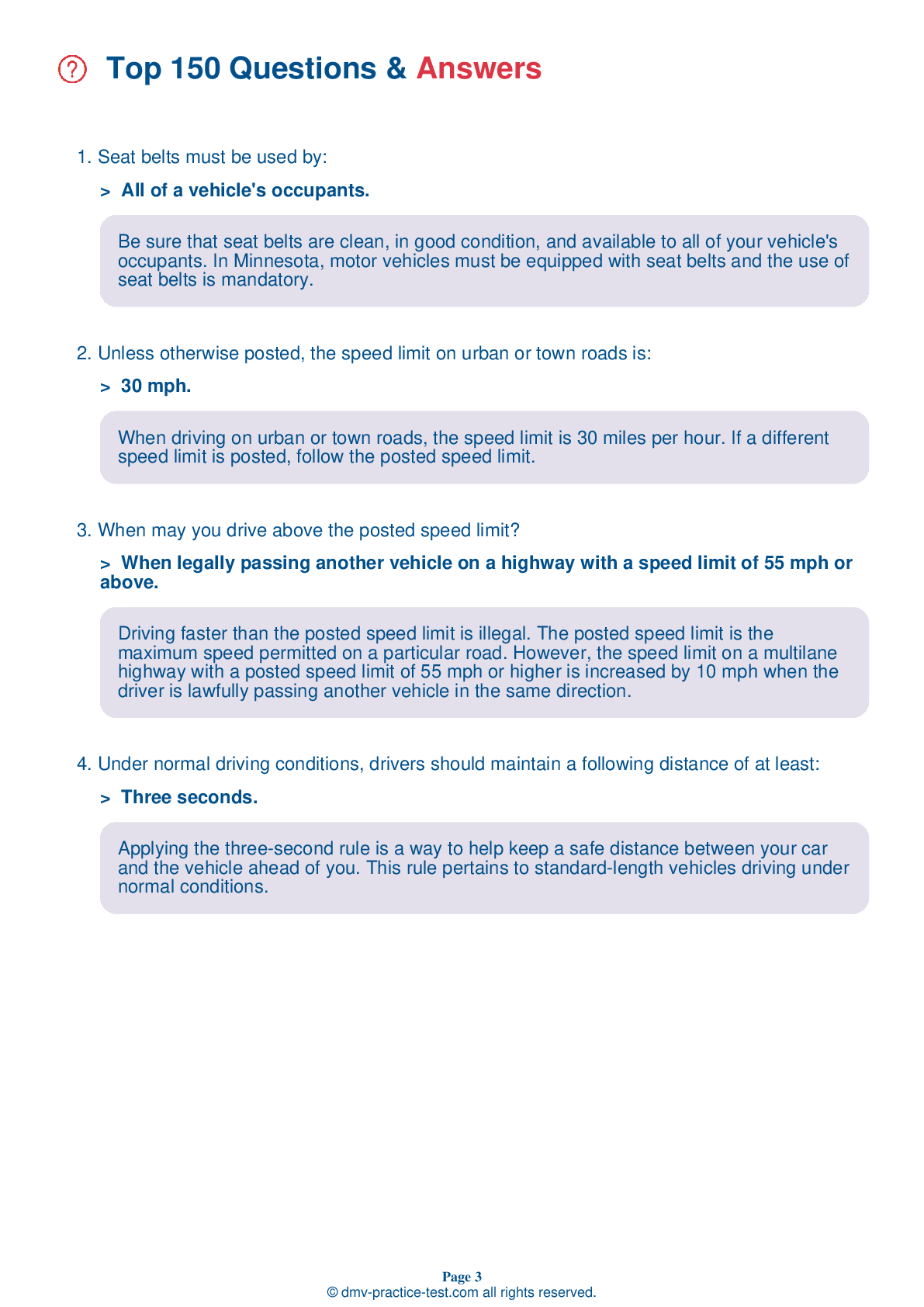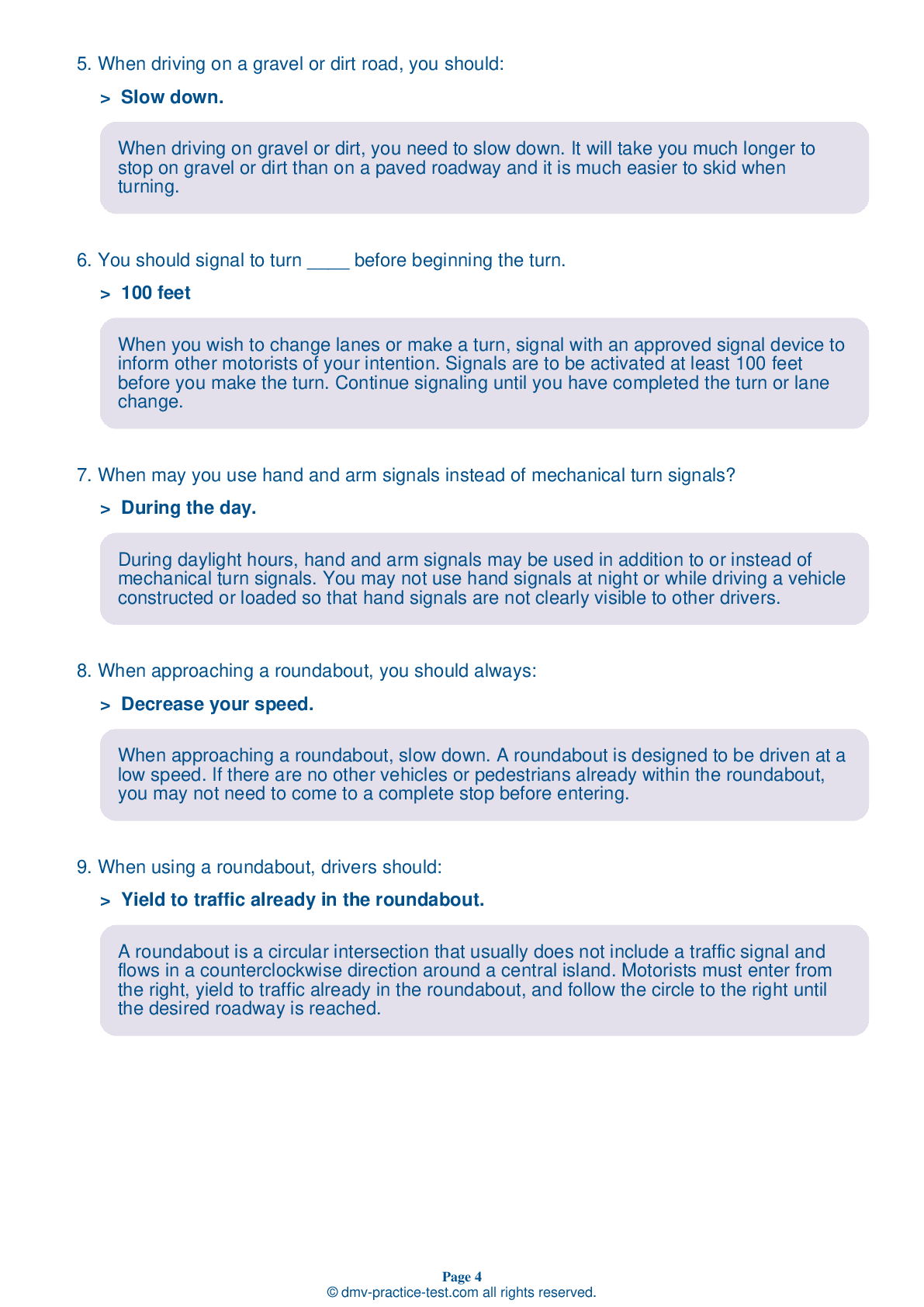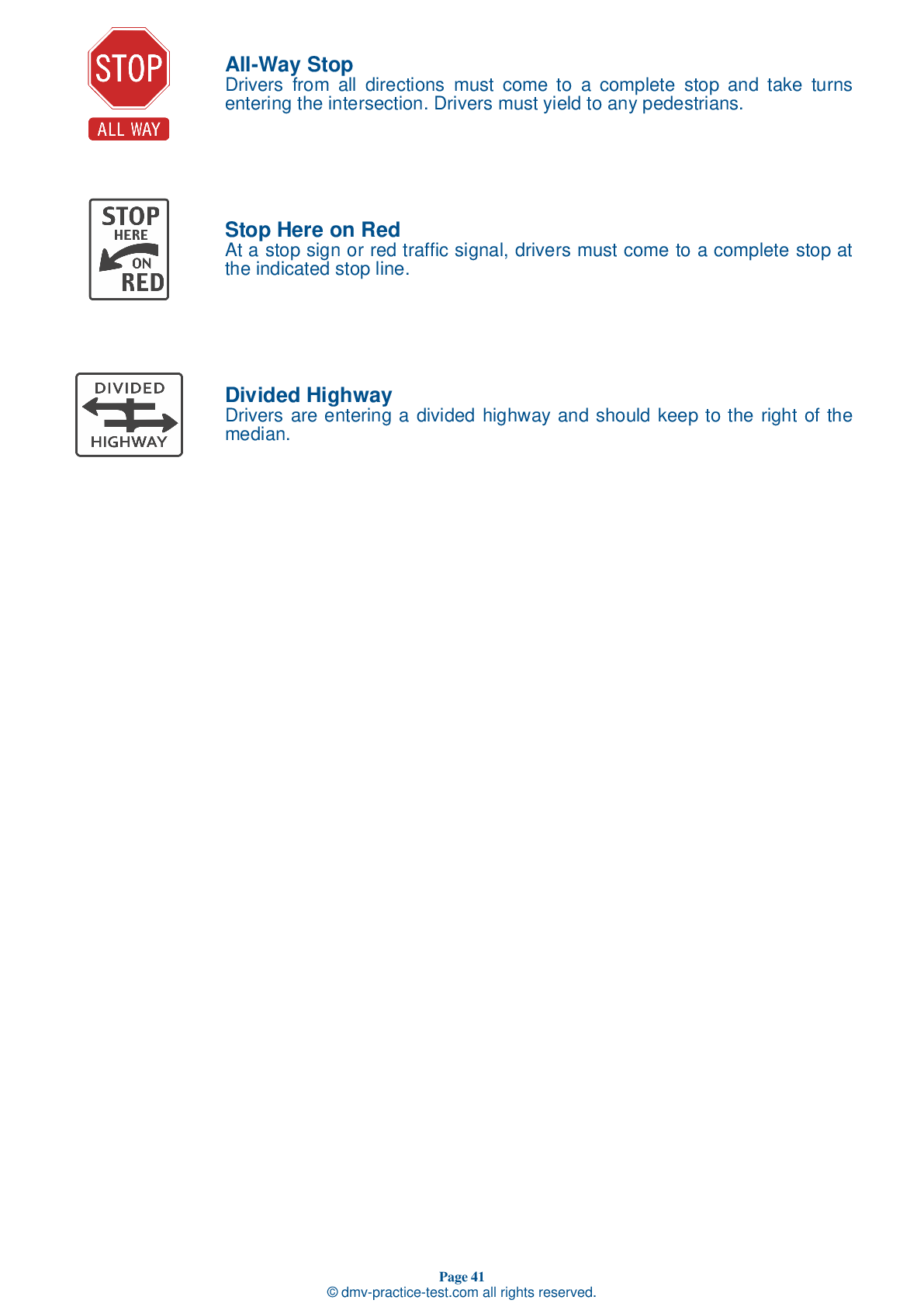FREE Minnesota DMV Practice Test #18 Page 2 of 5
The Minnesota DMV practise examinations have been updated for January 2025. It includes questions based on the Minnesota Driver Handbook's most essential traffic signals and laws for 2025. Use actual questions that are very similar (often identical!) to the DMV driving permit test and driver's licence exam to study for the DMV driving permit test and driver's licence exam.
On the practise exam, each question gets a tip and explanation to help you remember the concepts. The written component of the official Minnesota DMV test will include questions about traffic rules, traffic signs, and driving statutes, as well as knowledge from the Driver Handbook.
To obtain a passing grade, you must correctly answer 32 of the 40 questions. To help you prepare for your instruction permit or driver's licence, take our Minnesota DMV practise test.
The DMV exam is available in several languages.
Using any kind of testing assistance will result in an automatic fail, and the DMV may take additional action against your driver's licence, so stay away from it.
9 . A leaking exhaust system can:
The exhaust system helps remove toxic gases, reduce the noise, and cool the hot gases coming from a running engine. Fumes from a leaky exhaust system can cause death in a very short time. They can also make you drowsy while driving.
10 . If moving with a stream of vehicles across a railroad track, it is safe to stop on the track for a short period of time.
It is prohibited to stop, stand, or park on a railroad track. You should never cross railroad tracks unless there is room for your entire vehicle on the other side of tracks.
11 . If you’re going to turn left onto a one-way street, you should complete the turn into:
You should always turn from the lane that is closest to the direction you want to go. Turn into the lane closest to your previous lane.
12 . Drinking coffee after drinking alcohol:
Drinking coffee will not reduce your blood alcohol concentration (BAC). While it may help you to stay awake, it cannot change your BAC or make you sober.
13 . Fog can greatly reduce the visibility of other vehicles, pedestrians, and traffic signals. When driving in fog, you should:
Fog can greatly reduce your ability to see other vehicles, pedestrians, and traffic signals. When driving in fog, drive cautiously and at reduced speeds. Do not use high beam headlights. Low beams better illuminate the road and objects ahead in foggy conditions.
14 . What do lane use control signals with a solid yellow X indicate?
Lane use control signals are used when the direction of the flow of traffic in a specific lane changes throughout the day. They are used to show which lanes of traffic are open and closed, as well as to show if toll booths are open or closed. When a lane control signal contains a solid yellow X, drivers should clear the lane, as the lane signal is about to change to a red X.
15 . Your vehicle strikes an unattended parked vehicle and you cannot locate the vehicle’s owner. You:
Upon striking an unattended vehicle, stop and try to locate the owner. If you cannot find the owner, leave a written notice containing your name, your address, and the circumstances of the accident.
16 . If involved in an accident, a driver should:
If you are involved in an accident, you must stop at or near the scene. Move your vehicle out of the way of traffic, if possible. Do not stand or walk in traffic lanes as you could be struck by another vehicle. Turn off the ignitions of wrecked vehicles.
See the exact questions that will be on the 2025 Minnesota DMV exam.
99.2% of people who use the cheat sheet pass the FIRST TIME
LT gives us an insight on how the cheat sheet provided her with all the study questions she needed before taking her test.
Joe initially studied with the handbook and failed his test, he eventually found us online, studied and pass his test the first time around.



